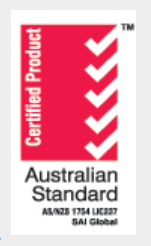Wearing seatbelts is compulsory, with seatbelt and child restraint laws appliable in South Australia.
Drivers must ensure that they and any passengers in the vehicle are wearing their seatbelt, regardless of their age. However, passengers are still accountable, as both drivers and passengers aged 16 years and over can be fined if they fail to wear a seatbelt.
Wearing a seatbelt can be a life or death decision – both for you and your passengers. Wearing a seatbelt doubles your chances of surviving a serious crash and nothing else offers the same level of crash protection for children as a properly fitted, approved child restraint.
For a seatbelt to work you should wear it properly adjusted and fastened. You should adjust it low over your hips, flat (with no twists, turns or folds) and firm (remove any slack).
The driver is responsible for ensuring all passengers, including children, are correctly restrained. Penalties include expiation fees and demerit points.
Child restraints
When travelling in a motor vehicle in South Australia, all children under 16 years of age must be restrained in a suitable approved restraint that is properly adjusted and fastened.
Child restraint laws are specific about what type of restraint is to be used at different ages and where children must be seated in a vehicle. Child restraints must match the age and size of the child and always be properly installed and adjusted to fit the child's body. The aim of these laws is to reduce the risk of injury caused by restraints that are unsuitable for a child's size.
When choosing a child restraint, make sure it complies with the Australian Standard and is marked accordingly. This mandatory standard specifies design and performance requirements for child restraints to provide maximum protection for children in crashes. Every compliant child restraint will feature the Standard Approved sticker and should be fitted according to the manufacturer’s instructions.

Children up to the age of 6 months
- Must use an approved rearward facing infant restraint.
- Must not travel in the front seat of a vehicle that has two or more rows of seats
Children 6 months up to 4 years
- Must use either an approved rearward facing infant restraint or a forward-facing child safety seat with an inbuilt harness.
- Must not travel in the front seat of a vehicle that has two or more rows of seats.
Children 4 years up to 7 years
- Must use either an approved forward-facing child safety seat with an inbuilt harness, or a booster seat with a properly fastened and adjusted lap-sash seatbelt or child safety harness.
- Must not travel in the front seat of a vehicle that has two or more rows of seats, unless all the other seats are occupied by children who are under 7 years.
Children 7 years up to 16 years
- Must use either an approved child restraint (a child safety seat or booster seat depending on their size), or a seatbelt that is properly adjusted and fastened.
Child restraint laws are based on age (rather than by height or weight) because research indicates that this is easier for parents to follow and will result in the smallest number of children being inappropriately restrained. However, a child's height and weight are still important to consider when making a choice about the right restraint or booster seat for your child. The law specifies:
- If a child is too tall or heavy for the restraint specified for their age, they may use the restraint specified for the next age group.
- If a child is too small to advance into the restraint for their age, they should remain in the restraint specified for the previous age group until they have outgrown that restraint.
A child can ride safely without a booster seat from seven years of age when they answer yes to all 5 questions below.
- Can the child sit with their back against the vehicle seat back?
- Do the child’s knees bend in from the edge of the seat?
- Does the sash belt sit across the middle of the shoulder?
- Is the lap belt sitting low across the hip touching the thighs, not on the belly?
- Can the child stay seated in this position for the whole trip (no slouching, no playing with the seatbelt etc)?
The National Best Practice Guidelines, Safety of Children in Motor Vehicles recommends children 12 years of age and under are the safest in the rear seat, regardless of the type of restraint they are using.
Visit the My Licence website for more detailed information on seatbelt and child restraints.

